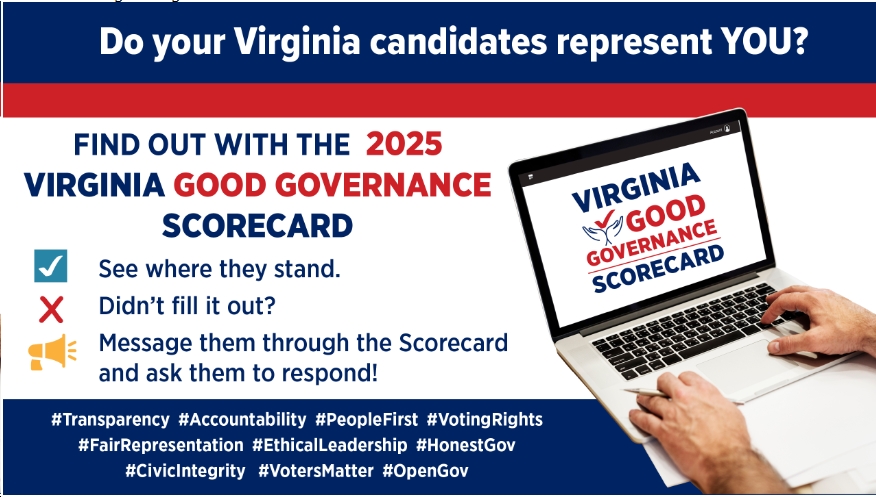by Ivy Main, cross posted from Power for the People VA
Climate and energy activists have been pinning their hopes on the 2020 legislative session to produce a framework for transitioning our economy to 100 percent carbon-free energy.
After years of talking big but delivering little in the way of carbon reductions and clean energy, the General Assembly is under pressure to finally deliver.
Much of the initial focus and discussion so far has been on two very different omnibus bills, the Clean Economy Act and the Green New Deal Act. But dozens of other bills also aim to reform Virginia energy law in ways both big (breaking up the monopolies) and small (clarifying HOAs’ abilities to regulate solar panels) — and everything in between (removing barriers to customer solar, taxing fossil fuel investments).
In the coming days I’ll post summaries of many of these bills. But for now, let’s take a look at the two omnibus bills that have energized so many activists. Both have their strong points; both would benefit from strengthening amendments. And both are guaranteed to be better than anything Dominion will put forward in the coming days, if rumors of such a bill prove correct.
The Clean Economy Act
HB1526 (Del. Rip Sullivan, D-Fairfax) and SB710 (Sen. Jennifer McClellan, D-Richmond) are the Clean Economy Act put forward by a coalition of renewable energy industry and environmental groups. This is a massive bill, running to 37 pages and covering diverse aspects of the electric sector, and yet it is also surprisingly restrained in its ambitions.
The CEA’s goal is a zero-carbon electricity supply by 2050, a goal that allows nuclear energy to keep its role in the mix, and also one that, after an initial kick, requires a ramp-up of renewable energy of only 3% per year from 2021 to 2050. Utilities also must achieve energy efficiency savings that start slow and creep upwards to a top rate of 2% per year in 2027; utilities generally can’t build new generation unless they first meet the efficiency targets.
The very modest pace of the required investments in renewable energy and efficiency leaves no room for utilities to argue that the targets cannot be met or will cause economic pain. On the contrary, critics can justly complain they are too easy. On the other hand, the bill has lots of elements utilities still won’t like, including an energy storage mandate, community solar, net metering reforms and a limited moratorium on new fossil fuel generation.
The bill includes provisions for joining the Regional Greenhouse Gas Initiative to reduce statewide electric sector carbon emissions 30% by 2030, in accordance with DEQ’s regulations finalized last year. The state would auction carbon allowances, with 50% of proceeds funding energy efficiency programs for low-income, disability, veteran and elderly residents; 16% going to energy efficiency measures on state and local property; 30% for coastal resilience; and 4% for administrative costs.
The renewable portfolio standard provisions look more complicated than they are, but even so, understanding what’s going on is not a job for the meek. First off, note that the RPS only applies to “total electric energy,” which does not mean, you know, total electric energy. The code defines the term to mean total electric energy minus electricity produced by nuclear power. Since nuclear provides about 30% of Virginia’s electric generation, that means the RPS percentages look 30% bigger than they really are. (This is a neat trick Dominion devised years ago to make our voluntary RPS sound more meaningful. People fell for it, which is why our voluntary RPS is widely described as targeting 15% renewable energy by 2025 instead of about 10%.)
Thus, the nominal RPS goal of 41% by 2030 does not mean that Virginia would get 41% of its electricity from renewable energy by 2030. The true percentage would be 41% of 70%, or — oh Lord, now I have to do math — somewhat under 30%.
Not incidentally, 30% by 2030 is the renewable energy target Governor Ralph Northam set in his Executive Order 43 back in September, and that squares pretty well with Dominion’s building plans. (The CEA, however, strives mightily to ensure that less expensive independent developers get a good share of the business.)
The drafters of the Clean Economy Act also chose not to change the code’s existing kitchen-sink definition of renewable energy, foregoing an opportunity to fix the mischief Dominion has got up to lately with what I call its Green Power for Suckers program and the Great Thermal REC Boondoggle. Instead, the RPS provisions exclude biomass and sometimes waste, then limit which specific technologies qualify for each tier of the RPS. The result is that even without changing the definition of renewable energy, biomass and thermal RECs have no place in the CEA mix, municipal waste incineration is limited to existing facilities and old hydro dams will cease to qualify when their contracts run out.
The system of tiers also allows the CEA to prioritize among technologies and project sizes.
- Offshore wind has its own tier beginning in 2027, as well as detailed instructions for how it will be developed.
- Tier II covers distributed (under 3 MW) Virginia-based wind, solar and anaerobic digestion (presumably meaning biogas from things like pig manure, reflecting Dominion’s deal with Smithfield Foods). This tier is divided into sub-tiers that ensure smaller projects are represented, and 10% of each tier is supposed to be sourced from projects serving low-to-moderate income persons. This tier begins at 3% of the RPS total in 2021, increasing to 9% in 2028, and then bouncing around strangely between 7 and 9% thereafter.
- Tier III can be met with Virginia wind, solar, wave, tidal, geothermal or energy from waste (poorly defined, but with a limit on the number of eligible RECs that, I’m told, just covers the output of existing waste incinerators in Virginia), or landfill gas (also from existing landfills and with a limit). These projects don’t have a size limit. Utilities are instructed to issue annual requests for proposals to acquire Tier III resources. Tier III begins at 30% of the RPS, gets as high as 43% in 2030, and then declines as offshore wind in Tier I takes a greater share.
- Tier IV can be met with renewable energy certificates from wind, solar and some hydro sources inside or outside Virginia, but within the PJM, the regional transmission organization that coordinates the electric grid in all or parts of 13 states, including Virginia, and the District of Columbia. Tier IV starts at 38% of the RPS total, goes as high as 51% in 2023, and then declines by fits and starts until it is less than 20% in the out years.
- The fifth tier consists of the old hydro RECs from PJM with existing purchase contracts. These begin at a whopping 29% of the total but decline rapidly to 6% in 2023 and even less thereafter.
Solar installers who focus on Virginia may be dismayed by the modesty of the in-state requirements. Only Tier II serves distributed generation, and all its sub-tiers and low-income provisions don’t make up for the fact that distributed generation must account for less than 0.3% of total statewide demand in 2021 (3% of the initial 14% goal, adjusted downward for nuclear). This may well be less than the amount of net-metered solar we will have then anyway, with or without the CEA. By 2030, distributed renewables would still account for less than 2.5% of total generation in Virginia, a far cry from the 25% or more that studies have shown is possible.
Meanwhile, Tiers IV and V allow RECs from utility-scale facilities located anywhere within PJM, accounting for more than half the RPS total for the first several years. If utilities choose to buy these out-of-state RECs instead of building new renewable energy in Virginia for this tier, ratepayers will be paying for economic development and jobs in other states, rather than supporting clean energy jobs at home.
(As I’ll describe below, this is an even bigger drawback of the Green New Deal Act.)
Defenders of the PJM RECs approach cite market efficiency and cost; RECs from states that don’t have RPS laws tend to be cheap, and allowing them to qualify for our RPS means projects will get built wherever it is cheapest to do it. That justifies allowing a small percentage of PJM RECs, but not making those RECs the centerpiece.
The CEA already has another, and better, cost-containment measure. If prices of RECs go too high, utilities have an option of paying into a fund administered by the state Department of Mines, Minerals and Energy instead. The money will be used for energy efficiency and renewable energy projects in Virginia benefiting mainly low-income residents. This “deficiency payment” alternative is a standard feature of other states’ RPS laws; it provides a critical cost cap while not letting utilities off the hook.
The CEA also includes community solar provisions and removal of certain barriers to net metering. It raises the net metering cap to 10%, raises the commercial size cap to 3 MW, removes all caps on third-party power purchase agreements, eliminates standby charges on residential and agricultural customers, and allows customers to install facilities large enough to meet 150% of their previous year’s demand. (These net-metering provisions intentionally duplicate five of the eight provisions of the Solar Freedom legislation, HB572, SB710 and others.)
In addition to all of this, the CEA includes a mandate for 2,400 megawatts of energy storage by 2035, with interim targets beginning with 100 MW by the end of 2021.
And just in case Dominion thinks that somehow all this still leaves room for any new fossil fuel plants, the CEA ends with a one-year moratorium on the permitting of any new carbon-emitting generating units that an investor-owned utility might want to build, until the government produces a report with recommendations for achieving a carbon-free electric sector by 2050 at least cost to ratepayers.
If I’d been writing this bill, I would have accelerated the timeline and focused the RPS more on Virginia projects, including rooftop solar. But as a framework this is still a strong bill, and it’s possibly the best we can do this year.
The Green New Deal
HB77 (Del. Sam Rasoul, D-Roanoke) is the Green New Deal Act. Its major features include a moratorium on any new fossil fuel infrastructure; a very aggressive timetable for 100% renewable energy by 2036; energy efficiency standards and a mandate for buildings to decrease energy use; low-income weatherization; job training; a requirement that companies hire workers from environmental justice communities; and assistance for workforce transition for fossil fuel workers.
The GND looks almost nothing like the Clean Energy Act. Its moratorium on new fossil fuel infrastructure is far broader than that in the CEA, covering not just electric-generating plants but also pipelines, refineries, import and export terminals and fossil fuel exploration activities.
It directs DMME to develop a climate action plan that addresses mitigation, adaptation and resiliency, supports publicly-owned clean energy and incorporates environmental justice principles. Forty percent of funds spent under the plan are to be targeted to low-income communities and communities of color.
The GND’s energy efficiency mandates are tougher than the CEA’s, requiring savings of 2.4% per year beginning immediately. These savings will be achieved not just by weatherizing buildings, upgrading heating and cooling, etc., but also by dramatically improving new buildings and requiring installation of rooftop solar wherever feasible.
DMME is also required to set performance benchmarks for scholarships, low-interest loans, job training programs and renewable energy projects to serve EJ communities (“until such date that 100 percent of the energy consumed in such communities is clean energy”), as well as a mandate that 50% of the workforce for energy efficiency and clean energy programs come from EJ communities.
(We should pause here for a reality check. We’re talking about Virginia, where many excellent programs that are already on the books currently go unfunded, and underinvestment in education and social services means companies can’t find enough qualified workers as it is.)
With all its aims of putting the energy transition on steroids, the Green New Deal also has a surprisingly weak RPS. In fact, it appears utilities would not have to build renewable energy projects in Virginia at all — or for that matter, close any fossil fuel plants.
The bill doesn’t actually say so, but it appears to contemplate that the very fast ramp-up of renewable energy to 80% by 2030 can be achieved by utilities buying renewable energy certificates from other states. I’m told Delegate Rasoul has confirmed this is his intention. There is no requirement for utilities to buy from in-state producers.
There is a practical reason for this: given how far behind Virginia is in developing wind and solar, allowing utilities to buy out-of-state RECs is probably the only way to meet an 80% by 2030 target. These RECs are traded on the open market; that makes it easy for utilities to comply, and eliminates reliability concerns because utilities can continue to run their existing fossil fuel plants as usual.
But there’s the rub: the bill contains no requirement to build wind and solar in Virginia, and utilities can run their fossil fuel plants as usual. That’s not the energy transition a lot of people are looking for.



 Sign up for the Blue Virginia weekly newsletter
Sign up for the Blue Virginia weekly newsletter

![Wednesday News: “The Silence of the Generals”; Is Trump’s Parade a “Dark Turning Point?”; The “Audacity of [Trump’s] Rapacity”; “Musk Crawls Back to Trump in Truly Humiliating Reversal”; ABC “News” in Air Quotes; VA GOP Fully on Board with Trump’s Authoritarianism](https://bluevirginia.us/wp-content/uploads/2025/06/montage0611-238x178.jpg)








